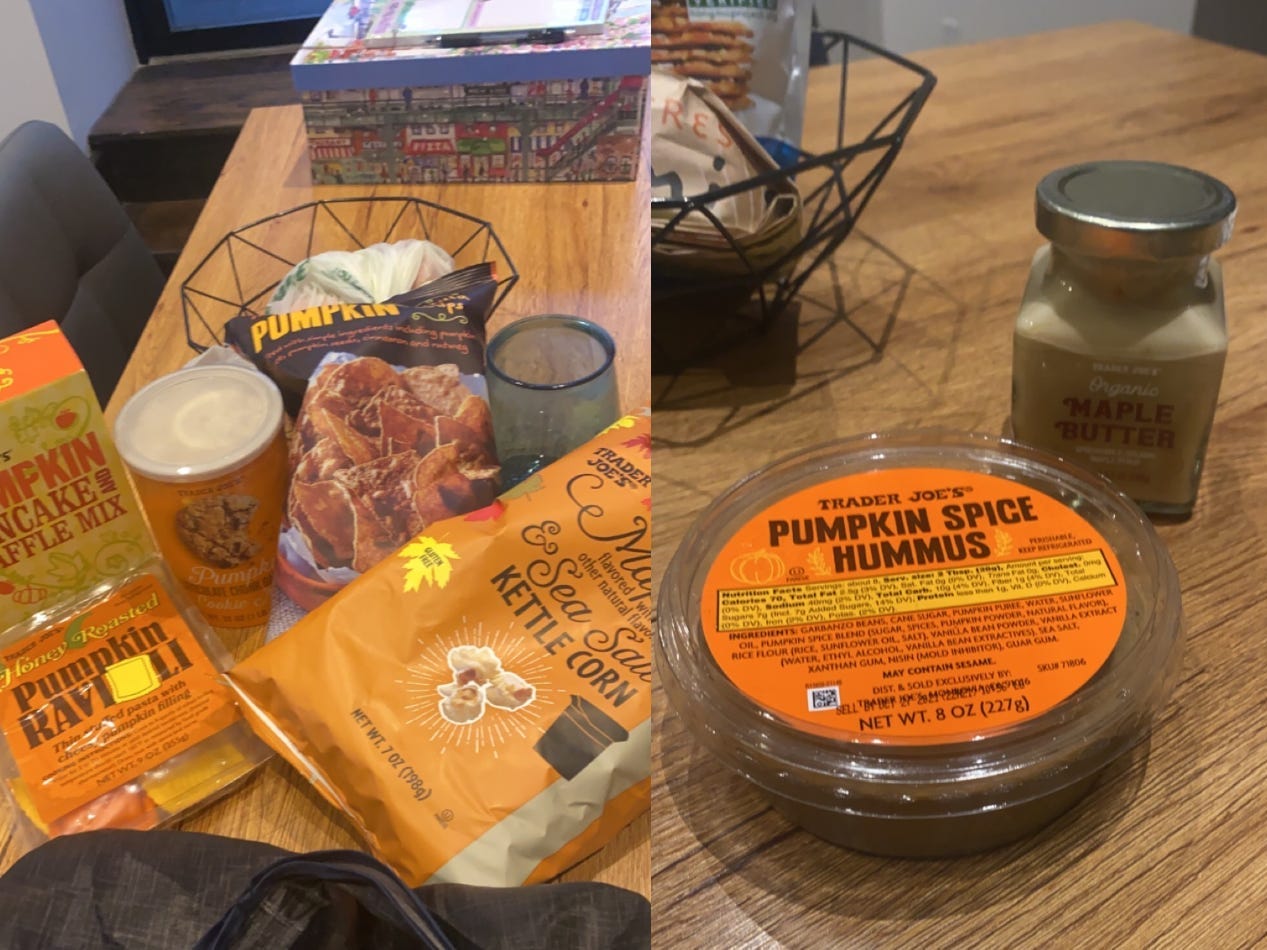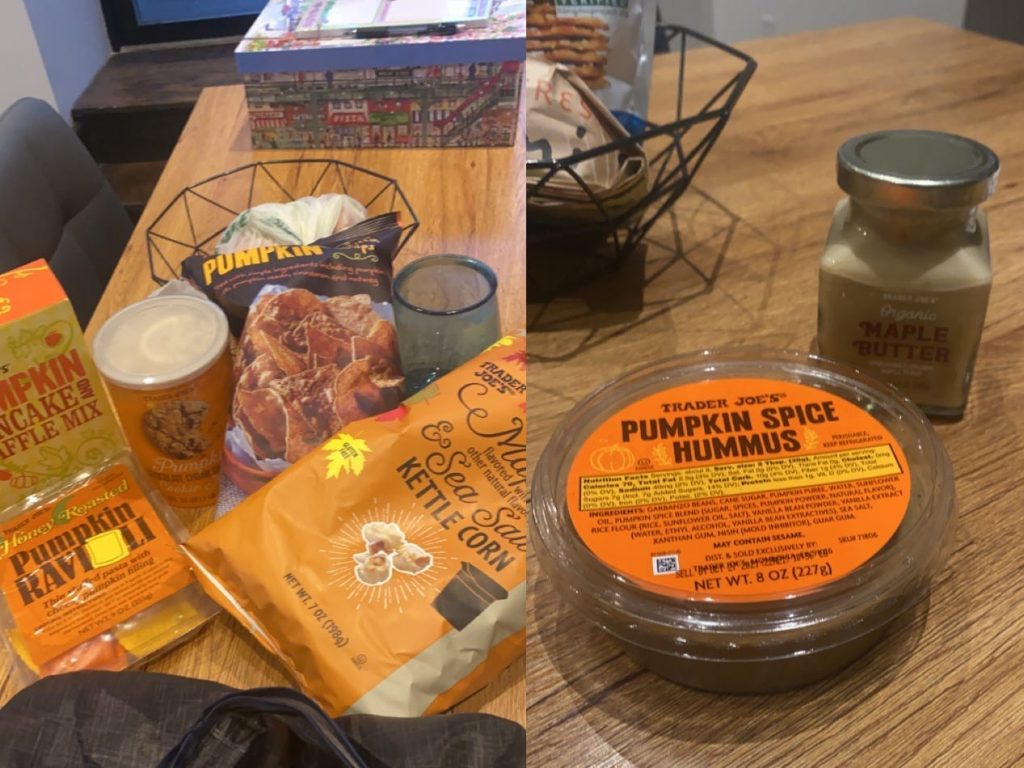
Andrea Michelson
- Pumpkin spice has become synonymous with fall, and food makers use that association to their advantage.
- Author Michael Moss explained that companies add pumpkin spice to their products to evoke fall memories.
- Food and memory are closely connected, which is why we feel attached to certain snacks.
As soon as Trader Joe's fall items hit the shelves in September, I felt a primal pull calling me to the grocery store. Call it an autumn breeze (even though it was 80 degrees out when I went) or seasonal tradition, I just knew I needed some pumpkin Joe-Joe's ASAP.
My pumpkin craving comes down to more than good marketing. According to Michael Moss, an award-winning investigative journalist who writes about the food industry, companies like Trader Joe's understand the sentimentality tied to fall flavors – and they're exploiting those emotions to get us to buy more snacks.
"It's family and it's wholesome and it's autumn leaves, right?" Moss said at the Environmental Working Group's CleanCon this week. "Some companies are drawing out those memories by adding the superficial elements of pumpkin spice to products that didn't have that before."
Where there was once pumpkin bread and puree in the fall dessert section, there's now a plethora of festive foods: pumpkin crescent rolls, pancake mix, and even hummus.
Surely Starbucks' annual PSL rollout – which seems to come earlier each year – strengthens the connection between pumpkin spice and the fall season. Marketing plays a huge role in our taste preferences, but people might not realize that those ads speak to a deep, even subconscious part of our brains.
Food and memory are intricately connected
We start developing memories of food at an early age - maybe as early as prenatal exposures in the womb, Moss explained at the EWG conference.
In his latest book, "Hooked: Food, Free Will, and How the Food Giants Exploit Our Addictions," Moss explores how food companies use those memories to their advantage. They make sure their products are inserted into happy memories, like a cold soda at a baseball game.
For Moss, the aroma of fresh Pop Tarts at a factory transported him back to his childhood. That connection helps explain why he started craving the comforting toaster pastries early in the pandemic, he said.
Studies in mice have shed some light on how this association may work in the brain. When exposed to the taste of toxic food, lab mice showed activation in their place-based memory centers. Tasting the contaminated food brought them right back to where they were when they first tried it, triggering an unpleasant memory.
In the case of pumpkin spice, smelling or tasting the flavor might bring back memories of the first chilly day of autumn or Halloween hayrides past. For fall lovers like me, the season wouldn't be the same without PSL-inspired treats.

